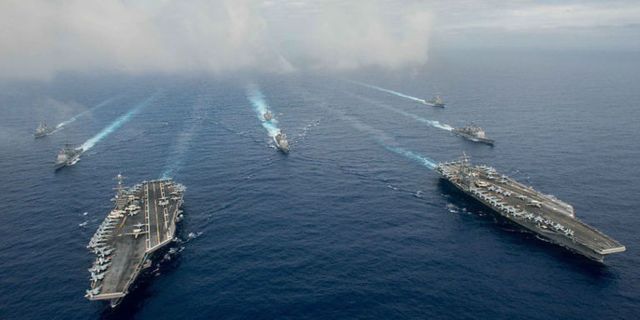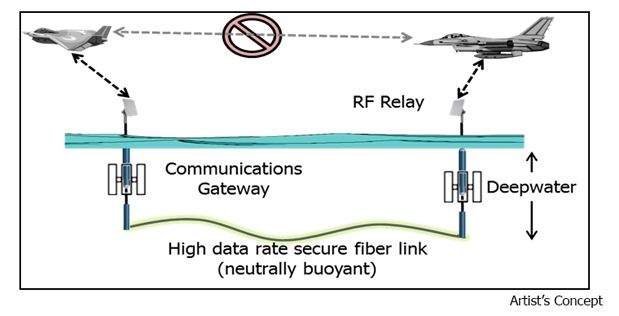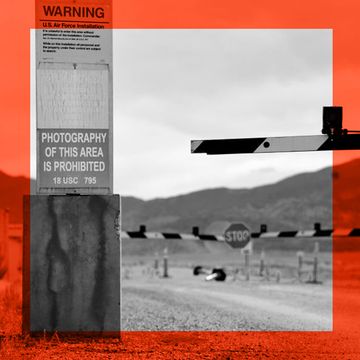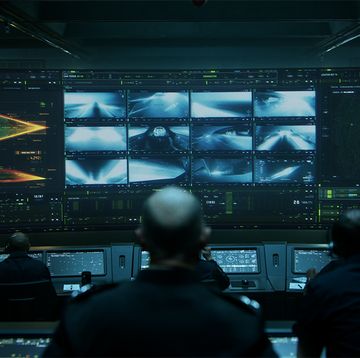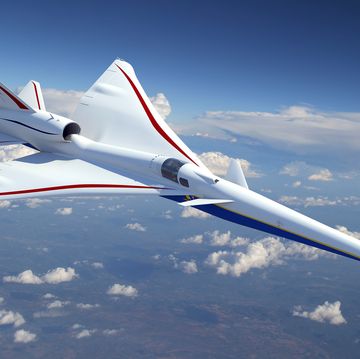The U.S. Navy relies upon satellite and other communications systems to make sure ships, planes, and sailors can share information across the Seven Seas. In peacetime, those systems are a given. But what happens in wartime, when satellites are shot down and other forms of comms are jammed or otherwise disrupted?
That's a very good question. The United States, NATO, and other key allies rely to a tremendous extent on satellite communications—which makes those satellites target No. 1 in a future war.
The Defense Advanced Research Projects Agency (DARPA) is developing a solution: TUNA. TUNA stands for Tactical Underwater Network Architecture, a portable, temporary communications network made up of floating communications buoys linked by fiber optic cable.
Here's how it would work. In the event of communications failure over a broad area, aircraft and ships would unload a series of TUNA buoys at sea. Each buoy consists of a radio frequency transmitter and power system. The buoys are connected by a "hair-thin, buoyant" fiber optic cable that can carry a tremendous amount of data and survive the harshness of the open ocean for at least thirty days—hopefully enough time to get primary communications restored.
Think of the system as laying a series of telephone poles across the surface of the ocean, a secure, hardwired system impossible to jam. While an adversary could theoretically tap the fiber optic lines and listen in, looking for a hair-thin wire in the middle of the Pacific Ocean would be even harder than looking for a needle in a haystack.
Individual buoys will likely be powered by WEBS, or Wave Energy Buoy that Self-Deploys. WEBS generates electricity from wave energy and consists of two floats that sit on the surface of the water and are rotated by passing waves. Differential and rotary motion is transferred through gearboxes to electrical generators, providing power. Here's a video demonstration of WEBS:
The TUNA system is entering its final phase of development and is using the Pentagon's Link 16 as a test subject. Link 16 is a secure digital communications network used by U.S. forces for text, digital imagery and digital voice transmission and reception.
No word on when TUNA will be ready for duty, but it sounds like all of the major engineering milestones have already been achieved.

Kyle Mizokami is a writer on defense and security issues and has been at Popular Mechanics since 2015. If it involves explosions or projectiles, he's generally in favor of it. Kyle’s articles have appeared at The Daily Beast, U.S. Naval Institute News, The Diplomat, Foreign Policy, Combat Aircraft Monthly, VICE News, and others. He lives in San Francisco.
